
Etosha National Park
Etosha National Park in northern Namibia is a premier African safari destination featuring a vast salt pan, exceptional wildlife viewing, and unique landscapes accessible to all budget levels.
national park
About Etosha National Park
Etosha National Park stands as one of southern Africa's premier wildlife destinations, located in northern Namibia and easily ranking among the top five safari areas in the region. The park's defining feature is its vast 120-kilometer-wide Etosha Pan, a spectacular salt flat that creates a unique and otherworldly landscape unlike anywhere else on the continent. This enormous white expanse stretches across the horizon under brilliant blue skies, providing an intoxicating blend of stark beauty and exceptional wildlife viewing opportunities. The park encompasses approximately 22,270 square kilometers of diverse habitats, from the salt pan itself to surrounding savanna woodlands, grasslands, and thorn scrub vegetation. What makes Etosha truly remarkable is the concentration of wildlife around its numerous waterholes, particularly during the dry season when animals congregate in predictable patterns. Visitors frequently encounter elephants caked in white Etosha dust, black rhinos communing around waterholes after dark, lions feeding by the water while nervous gazelle herds mill around nearby, and massive herds of zebras, wildebeest, and other ungulates. The park's infrastructure is excellent, with well-maintained roads, multiple rest camps, and organized accommodation ranging from basic camping to comfortable lodges. Etosha is notably accessible to budget travelers, offering exceptional wildlife viewing experiences regardless of accommodation level. The park's unique combination of vast salt pans, concentrated wildlife populations, and reliable infrastructure makes it one of Africa's most rewarding safari destinations, where three days can provide sufficient time for meaningful wildlife encounters and landscape appreciation.
Wildlife to See
Flora & Vegetation
Activities & Experiences
Landscape & Terrain
Etosha's landscape is dominated by the vast, stark white Etosha Pan salt flat surrounded by savanna woodlands, grasslands, and thorn scrub. The terrain features numerous waterholes, seasonal water sources, and varied vegetation zones creating diverse habitats for wildlife.
Conservation Efforts
Etosha implements active conservation programs focusing on black rhino protection, wildlife monitoring, and habitat management. The park works with international conservation organizations and local communities on sustainable wildlife management and anti-poaching initiatives.
Local Communities
Etosha is located in traditional Herero and Damara lands. The name 'Etosha' means 'Great White Place' in the Herero language. Local communities have historical connections to the region. Some tours include cultural visits to nearby communities and conservancies.
Photography Tips
Bring telephoto lenses (200-400mm) for wildlife. Early morning and late afternoon provide best lighting. The white pan offers unique backdrops for silhouettes. Polarizing filters help with glare. Bring lens cleaning supplies for dust. Waterhole photography at dusk is exceptional.
Safari Packages (6)
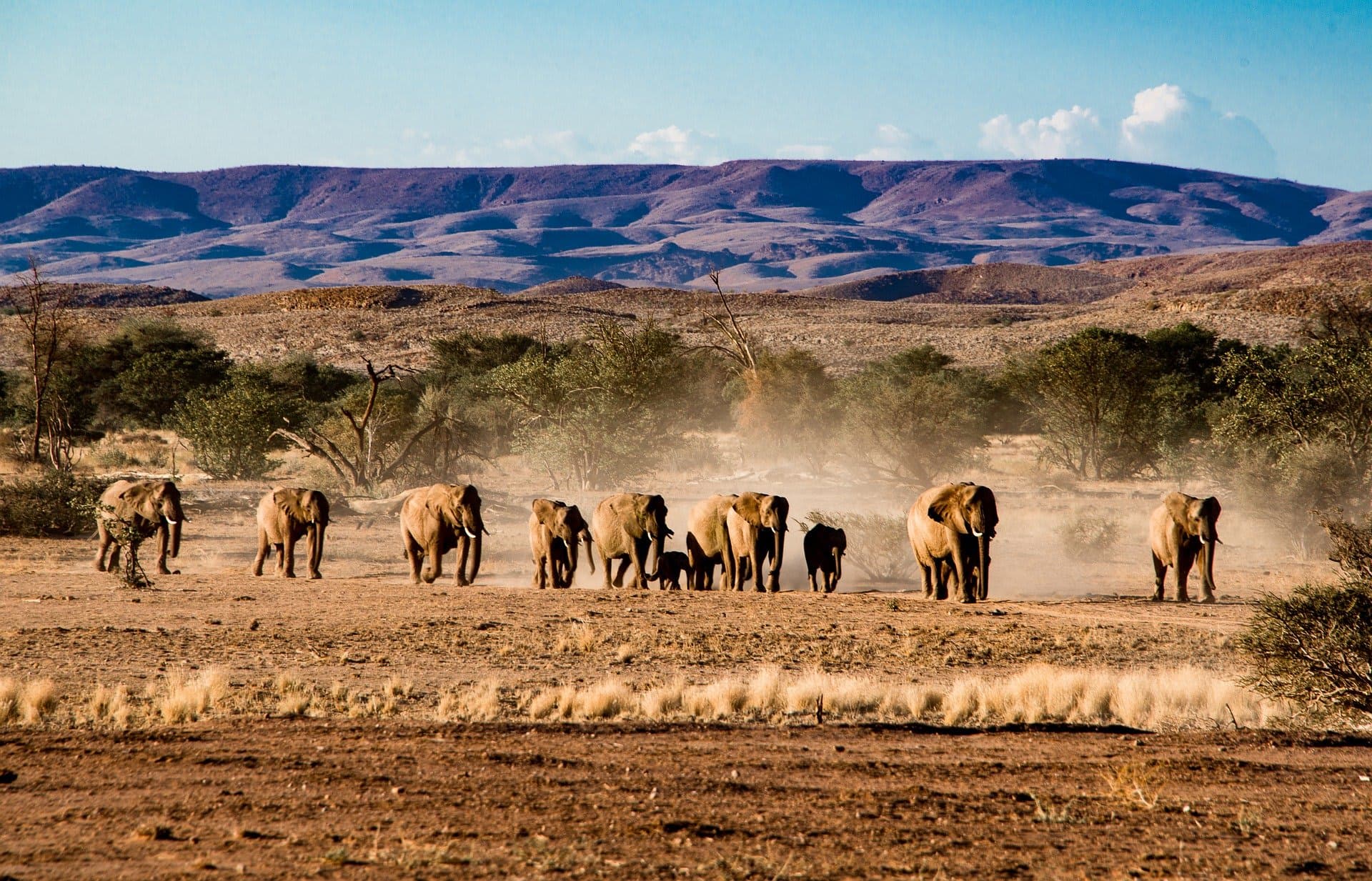
10-Days Namibia's Greatest Wildlife Adventure Self-Drive
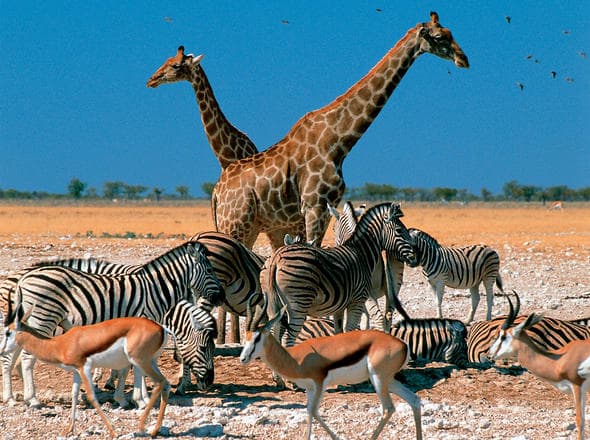
10-Days Namibia's Complete Wilderness: 10-Day Safari
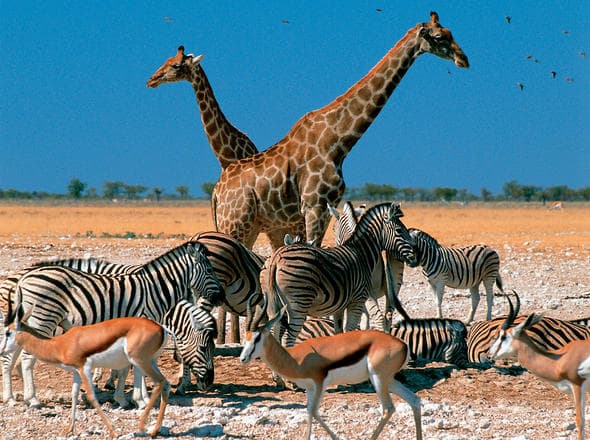
7-Days Namibia's Golden Desert Discovery Adventure
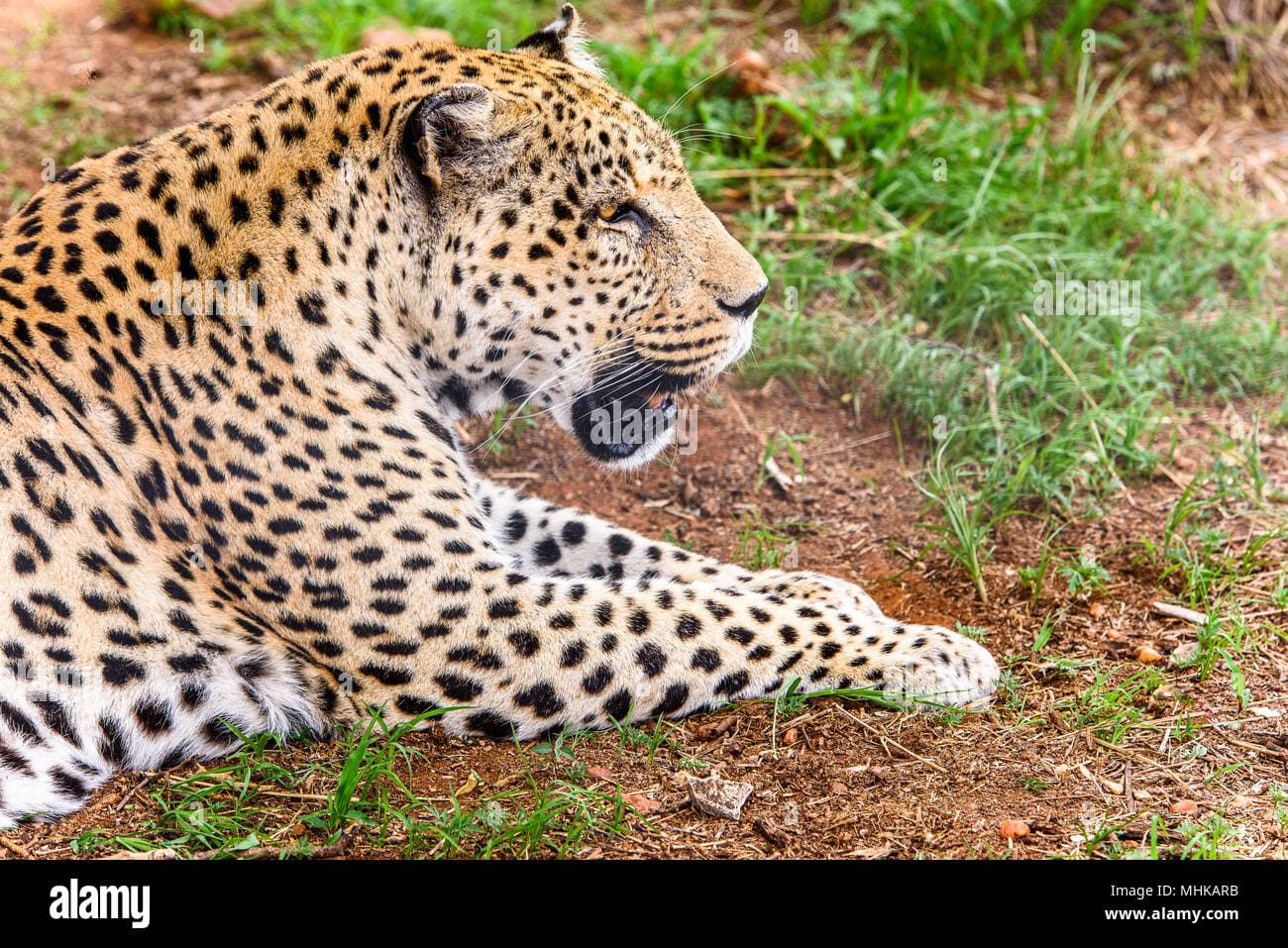
10-Days Namibia's Ultimate Wilderness Discovery

10-Days Namibia's Wild Heart: 10-Day Self-Drive Adventure
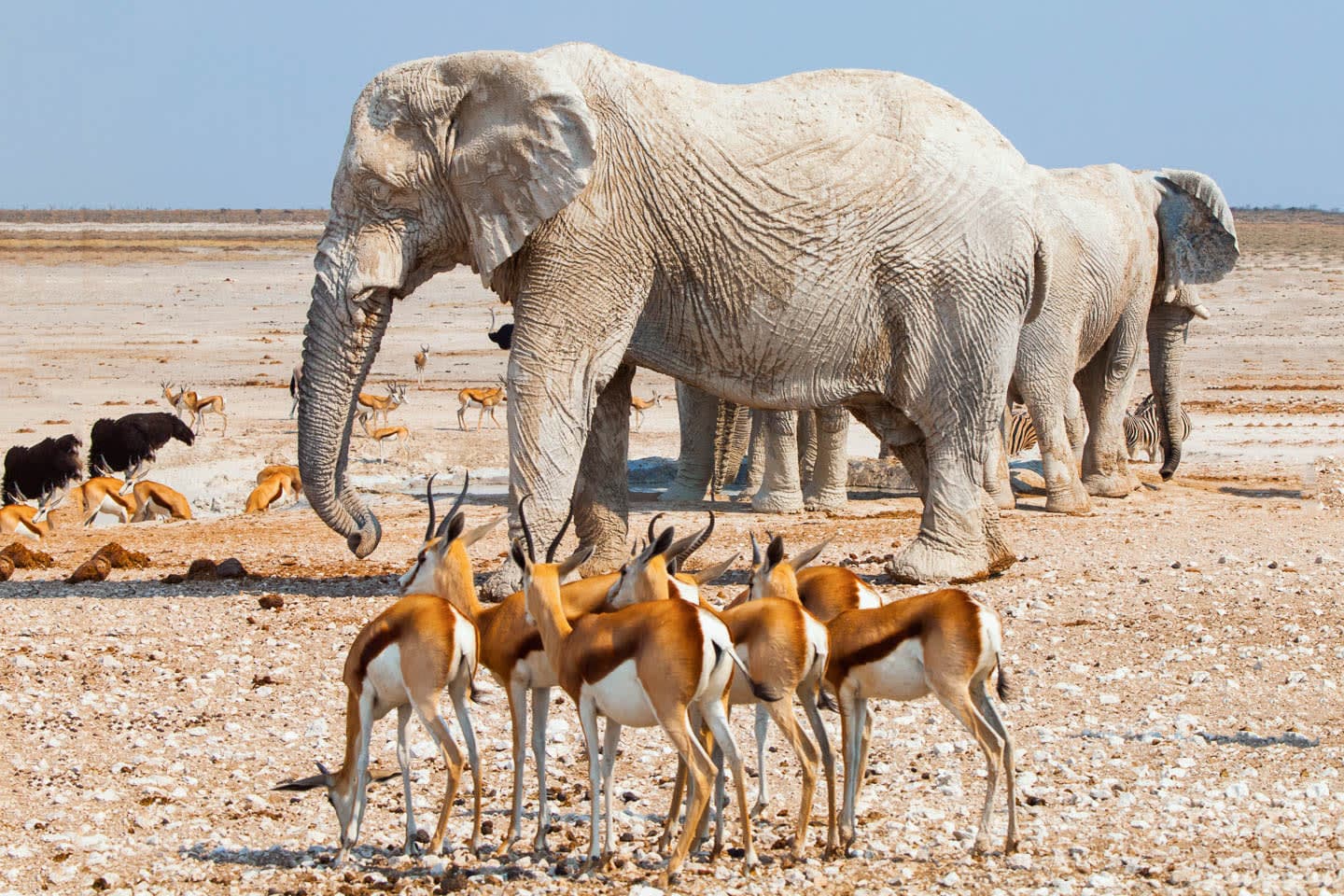
8-Days Namibia's Iconic Wildlife Explorer
Quick Information
Established
1907
Size
22,270 km²
Elevation
1,066 meters
Recommended Duration
3 days
Entry Fee
$80 USD
Average Cost/Day
$150 USD
Best Time to Visit
The dry season from May to September offers the best wildlife viewing as animals concentrate around waterholes. June to August provides cooler temperatures and peak game viewing. The green season (November to March) features lush vegetation and bird watching opportunities but can have muddy roads. April and October are shoulder seasons with moderate conditions.
Getting There
Fly to Windhoek's Hosea Kutako International Airport, then drive approximately 4-5 hours north to Etosha. Alternatively, fly directly to airstrips near the park. Self-drive or join organized tours from Windhoek.
Nearest Airport: Hosea Kutako International Airport (Windhoek)
Nearest Town: Windhoek (approximately 400km south)
Accommodation Options
Conservation Status
Protected national park with active conservation efforts for endangered species including black rhinos and other wildlife
Start Planning Your Visit
Compare packages from verified operators and find the perfect safari experience